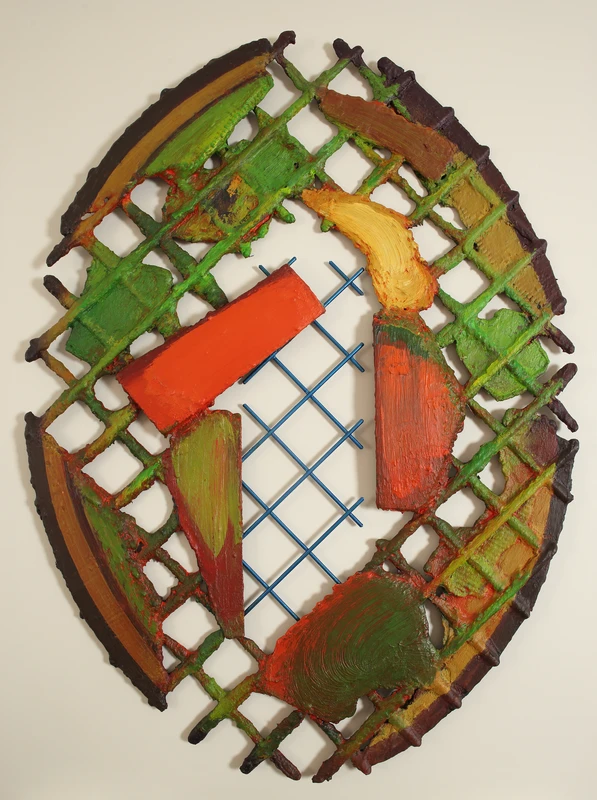William Tillyer: Still Life
29 Sep-29 Oct 2022


Bernard Jacobson Gallery presents a selection of still lifes by the British artist William Tillyer. This exhibition examines the development of the still life throughout the course of Tillyer’s career and unfolds through a variety of media, including watercolours, prints, oil paint and acrylic, and the artist’s signature wire mesh, which he incorporated into his work as early as the 1970s. Though the still life is a traditional subject matter, Tillyer’s still lifes are unique for their radical combination of figuration and abstraction, reality and illusion – techniques inspired by Paul Cézanne and Georges Braque. As he draws on these twentieth-century artists, so too is he influenced by seventieth- century Dutch still lifes in his representations of flowers in vases and fruit in bowls.
Tillyer was born in 1938 in Middlesbrough, where he studied painting from 1956 until 1959 at the Middlesbrough College of Art. In the 1960s, he moved to London to study painting and printmaking at the Slade School of Art. Though Tillyer experimented with a range of media, at the Slade he became especially well known for his printmaking and benefited from the growing international interest in prints. After displaying his work at the Second International Print Biennale in Kraków in 1968, Tillyer showed his prints to Bernard Jacobson, who became his dealer and remains so to this day. In the 1970s, Tillyer shifted his primary focus away from printmaking and toward painting, but throughout the course of the professional relationship between Tillyer and Jacobson, the artist has consistently expanded the limits of his practice.
This exhibition spans Tillyer’s depictions of still lifes from the 1950s to the present. The artist’s interest in the relationship between man and nature consistently emerges as a theme in his work. In his still lifes, this preoccupation can be seen through the fluid representation of nature in contrast to the precise forms of manufactured goods such as vases and bowls. This principle is further highlighted by the materials that Tillyer uses: in his mesh works, for example, paint evokes the natural world as it mingles with industrial steel. Yet, Tillyer insists that paint itself is just as man- made as mesh wire; paint is merely a means of representation that can be manipulated into appearing as elements from nature. This juxtaposition is central to Tillyer’s practice and can be seen throughout his still lifes exhibited in this show.
In addition to the juxtapositions between nature and the man-made, and abstraction and figuration, Tillyer’s still lifes also explore the possibilities of texture. Tillyer plays with texture in his Courthope Collection etchings from the 1970s, where fluid ink represents the flowers pouring out of vases, which are adorned with precise lines or hatches. This investigation extends to Tillyer’s York Vases woodblock prints from the 1980s, which include detailed flowers exuding from decorated vases, surrounded by sharp, detailed lines that reveal either shadowing or decorated backgrounds. So too does Tillyer create a sense of texture in watercolours – such as his For Percival David series from the 2000s – as he fuses the soft fluidity of watercolours with the precise linearity of cross hatching. In his most recent works, three-dimensional wire mesh is used as a base upon which acrylic paint is layered. The result is a tangible texture that portrays his most realistic still lifes yet. Through Tillyer’s deliberate use of his media, he showcases his thoughtful consideration of his subject matter and his understanding of nature and man’s intervention within it.
William Tillyer: Still Life | Press Release
Download